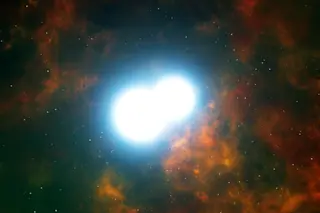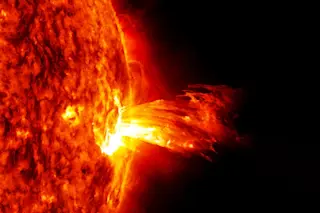Artist’s impression of two white dwarf stars destined to merge and create a Type Ia supernova. Credit: ESO/L. Calçada Astronomers can see into the future of the two superdense stars racing around the center of planetary nebula Henize 2-428. And it doesn’t look good. Their racetrack is slowly (but steadily) shrinking. And in 700 million years, they will crash into each other, igniting a Type Ia supernova. In over a century of astronomers studying supernovae, this is the first time they’ve seen this type of supernova in the making.
Type Ia supernovae are the game-over of some normal-sized stars, which spend most of their days fusing hydrogen into helium. As they age, they begin turning that lifetime’s supply of helium into carbon and oxygen. But they don’t have enough energy to concoct something new, and so their carbon and oxygen build up into a hot, dense core. In a death-rattle, ...














